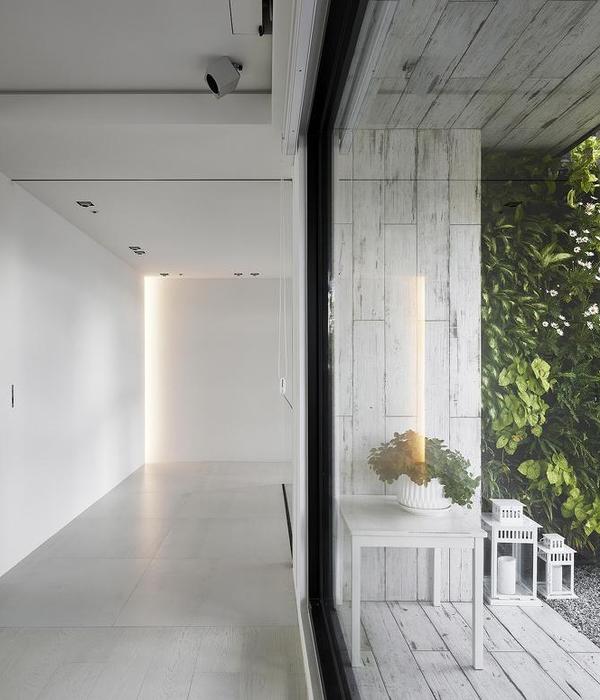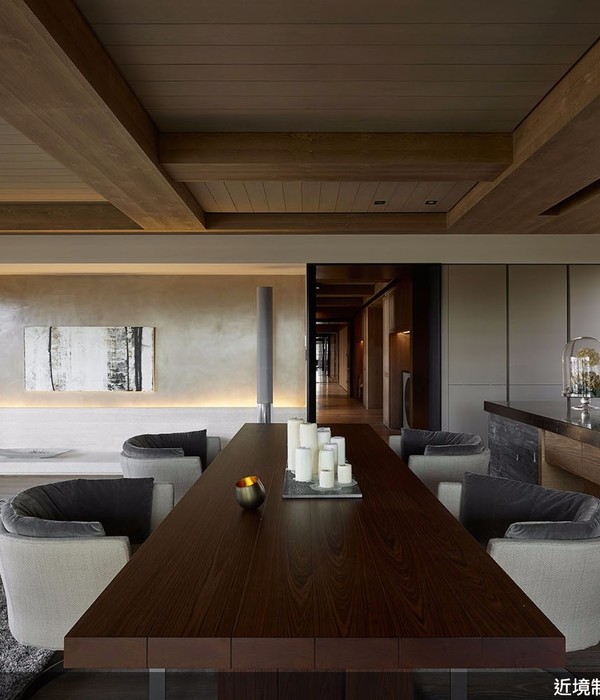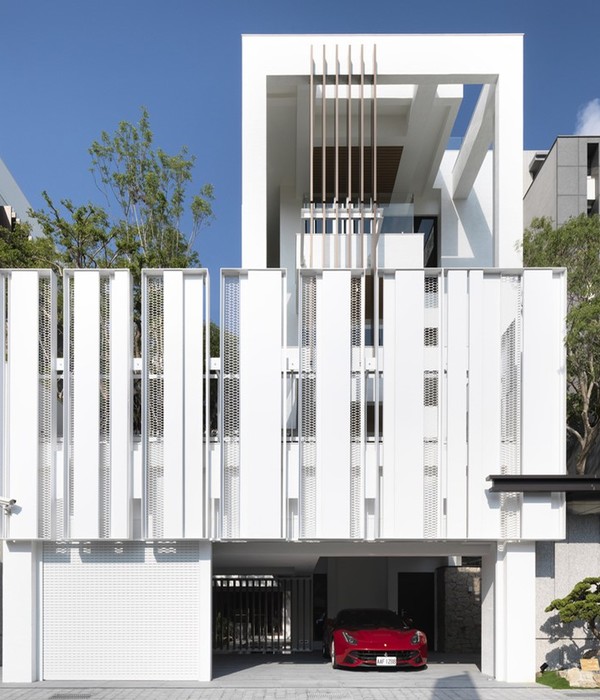“这项研究以新的方式提出了一系列重要的问题,它指明了那些需要我们去重视的关系、压力和冲突。”
– 2018年评奖委员会
“The research is asking important questions in a new way and pointing out the relationships, the tensions, and the conflicts where we need to pay attention.”
-2018 Awards Jury
来自
ASLA
Atlas for the End of the World – Atlas for the Beginning of the Anthropocene by
University of Pennsylvania
Appreciation towards
ASLA
for providing the following description:
项目概述
PROJECT STATEMENT
这部以网络为基础的交互式地图集耗时4年完成,调查了全球36个最具代表性的、生物多样性受到严重威胁的热点地区,并研究了生物保护、土地利用以及城市发展之间的矛盾现状。
进一步看,该地图集还展示了这些热点地区以及它们所包含的391个生态保护区在未来将如何达到联合国在生物多样性公约中规定的要求。图集还从热点地区的422个主要城市中确定了383个正在迅速扩张的城市:这些城市与残余栖息地以及濒危(被列入红色名录的)物种之间存在着不可避免的冲突。
通过分析与生物多样性相冲突的土地滥用和城市扩张,该图集不仅为规划者和自环境保护主义者提供了有力的工具,使其能够更加专注于实践并确定工作重点,更为那些缺乏专业技术的地区的景观设计与规划奠定了稳固的基础。
4 years in the making, this web-based interactive Atlas surveys the status of, and conflicts between conservation, land-use and urban growth in the world’s 36 biodiversity hotspots – regions which by definition harbor the most threatened and irreplaceable biodiversity on earth.
Specifically, the Atlas shows how the hotspots and their 391 constituent ecoregions are performing with regard to meeting 2020 United Nations protected area targets under the legally binding Convention on Biological Diversity. The Atlas also identifies 383 of the 422 major cities in the hotspots which are sprawling, and forecast to continue to sprawl, in direct conflict with remnant habitat and endangered (Red Listed) species.
Through its analysis of both large-scale land-use and peri-urban growth that is in conflict with biodiversity, the Atlas serves as a geopolitical tool for planners and conservationists to focus and prioritize their efforts. Whilst this is valuable and important work in and of itself, the Atlas also prepares the ground for the involvement of landscape architecture in regions where the profession’s skills are most needed.
项目说明
PROJECT NARRATIVE
世界上的第一部地图集名叫《Theatrum Orbis Terrarum》(世界概貌),由安特卫普的地图学家Abraham Ortelius于1570年绘制。它粗略地概括了世界的布局和初始的生态系统,为的是在不久的将来进行殖民。大约450年过后,《世界末日地图集》诞生了。这部地图集所描绘的显然不是真正的世界末日,相反,不如说它是Ortelius所描绘的世界的终结——在这里,生态系统的一切(包括人类)仿佛都可以被无节制、无止境地剥削和开采。
《世界末日地图集》调查了全球36个最具代表性的、生物多样性受到严重威胁的热点地区,并研究了生物保护、土地利用以及城市发展之间的矛盾和现状。具体的方法是将热点地区的保护区数量与生物多样性公约(CBD)中规定的、由196个国家签署的“17%”的目标进行比较。
世界上现有的保护区面积为全球陆地面积的15.4%,要达到17%的目标就意味着,保护区的面积需要在2020年再增加1.6%。这听上去好像轻而易举,但事实上,这1.6%的面积相当于70万个曼哈顿中央公园。而本次研究提出的主要问题是,到底哪些土地是最需要受到保护的?
研究分析的基本方法是对全球土地覆盖的类别进行栅格化的描述。这些栅格首先被转化为矢量图形;之后,代表耕地、荒地、水(冰)域和城市的图层被删去;最后,再通过地理信息系统(GIS)从剩余的区域中选出需要被作为保护对象的栖息地。
经研究发现,36个热点地区中有21个地区还远远落后于17%的目标。而在进一步细化的分析过程中发现,391个生态保护区中有221个与17%的目标相差悬殊。从附图中可以具体看出当每个热点地区达到17%的目标时还需要再增加多少受保护的土地。基于类似的方法,保护区和残余栖息地被重新绘制为与初始地图比例相同的正方形,以便清晰地指示出既定生态区实现目标所必须额外保护的土地(以水鸭绿表示),以及目前还有多少可以利用的栖息地(以浅绿色表示)。
本次研究并未局限于传统的划定保护区的方法,而是将区域化土地利用与城市化的动态现状联系起来,并在研究的第二阶段调查了36个热点地区中的422个城市(人口估计达到30万人以上),为的是能够确定具体有哪些城市正处于或即将处于迅速扩张的阶段,且会与残余栖息地以及濒危物种发生直接的冲突。调查中显示这422个城市中有383个会面临直接冲突,而这些城市中的绝大部分几乎完全没有采取过任何应对政策。附图中展示了“大西洋沿岸森林”这一热点地区所包含的城市,黄色的圆形代表了基于2030年的城市增长而预测出的冲突区域。
用于识别这些城市的方法是: 从耶鲁大学的Seto Lab调取2030年的城市增长覆盖图,并将其与全球土地利用数据库和IUCN红色名录中的残存植被数据以及3245个哺乳动物物种数据进行叠加和比较。
由于这些“冲突区域地图”的分辨率很低(5km x 5km像素),因此研究团队在项目的第三阶段从热点地区中选择了33个规模最大且发展最快的城市作为样本,以确保分析更加清晰和详细。在这些“热点大城市”(如大西洋沿岸森林地区的圣保罗)中,与濒危物种保护相冲突的城郊地区的分析已经达到了很高的分辨率。第三阶段的工作已于2018年2月在吉隆坡的世界城市论坛上进行展示。研究团队认为,这33个城市应当起到表率性的作用,共同构建一个知识创新和知识共享的联盟。这一想法得到了相关领域的主要非政府组织的广泛认可。
这项研究产生了800多个新地图和支持性文字,直接指向世界范围内最重要的生物区内的土地规划和管理问题。本项研究打破了学术界向来只针对少数人出版书籍的陈规,将研究结果制作成一个交互式网页,在大众间广泛传播。之所以这样组织和呈现,是为了吸引专家和公众的注意力。该系列共包含了一套40张的(原始)世界地图和相关艺术作品。自2017年世界地球日(4月22日)确立以来,截止至本文撰写时间,该网站已经有超过17万网站独立访客——平均每天超过500人。该研究还通过30多家新闻媒体进一步传播,其中最著名的便是国家地理和科学美国人,这两家媒体加起来的受众超过2500万人。
本项目之前,参与研究的人员并未预料到会出现这种规模的目标不足和城郊冲突等地域性问题。通过准确识别这些“危机景观”,国家和大型的非政府环保组织便可以更好地协调工作,优先考虑如何减少未来生物多样性的损失。为了达到这一目标,由项目发起人、大自然保护协会、倡导地区可持续发展国际理事会(ICLEI)、斯德哥尔摩防灾中心和Helmholz环境研究中心联合成立的同盟已经形成,确定了8个基于城市的示范项目,旨在表现如何通过规划、设计和当地社区的参与,使得城市发展和生物多样性更好地共存。对于景观建筑师来说,这个项目所探讨的话题、规模和组织构成,都具有划时代的意义。
从ASLA的角度来看,值得注意的一点是本研究项目的发起人将结果作为论据,认为景观专业应该直接参与到如今由环境保护学和经济发展分别主导的社会发展中。通过这种方式,本研究有意将景观建筑学专业定位为21世纪全球范围内环境保护与城市发展关系的仲裁者。《世界末日地图集》曾经是一个研究项目,现在则致力于为景观学专业和景观建筑学院另辟蹊径,从而真正地扩大其范围,并为实现全球化管理工作迈出重要的一步。
▲Abraham Ortelius的肖像,以及世界上第一部地图集《Theatrum Orbis Terrarum》(1570年)的卷首页。Portrait of Abraham Ortelius and frontispiece from the Theatrum Orbis Terrarum, the world’s first Atlas (1570)
▲世界上第一部地图集《Theatrum Orbis Terrarum》中描绘的世界。The world according to the 1570 Theatrum Orbis Terrarum – the world’s first Atlas.
▲世界上现有的保护区面积为全球陆地面积的15.4%。The world’s protected areas – currently 15.4 % of global terrestrial area.
▲分布在全球的36个生物多样性热点地区。大西洋沿岸森林地区被突出显示,旨在为每个热点地区提供详细的分析案例。The world’s 36 biological hotspots – with the Atlantic Forest hotspot highlighted so as to key in an example of the detailed analysis conducted for each hotspot.
▲大西洋沿岸森林地区分析图,展示了已经得到保护的土地数量以及达到生物多样性公约规定的17%的目标所需要额外进行保护的土地数量。The Atlantic Forest hotspot showing how much land is protected and how much land needs to be protected in order to meet the United Nations 17% (Convention on Biological Diversity) target.
▲大西洋沿岸森林地区分析图。为达到生物多样性公约规定的17%的目标,每个地区需要增加的保护区域面积有所不同。The eco-regions of the Atlantic Forest hotspot showing the amount of protected area in each and the amount necessary to protect in order to meet the 17% (Convention on Biological Diversity) target.
▲大西洋沿岸森林地区分析图。为达到生物多样性公约规定的17%的目标,每个地区需要增加的保护区域面积有所不同。The eco-regions of the Atlantic Forest hotspot showing the amount of protected area in each and the amount necessary to protect in order to meet the 17% (Convention on Biological Diversity) target.
▲世界地图突出展示位于生物多样性热点地区的城市,这些城市与残余栖息地以及濒危物种之间存在着冲突。World map highlighting cities in the world’s biodiversity hotspots which are sprawling in conflict with remnant habitat and endangered species.
▲大西洋沿岸森林地图展示了生物保护、土地利用以及城市发展之间的矛盾现状。Map of the Atlantic Forest hotspot showing zones of conflict between urbanization, land-use and endangered species.
▲“大西洋沿岸森林”热点地区所包含的城市,黄色部分代表了基于2030年的城市增长而预测出的冲突区域。Example of mapping showing peri-urban zones of conflict (in yellow) between urban growth (forecast to 2030 ) and endangered species in the example of the Atlantic Forest hotspot.
▲“大西洋沿岸森林”热点地区所包含的城市,黄色部分代表了基于2030年的城市增长而预测出的冲突区域。Example of mapping showing peri-urban zones of conflict (in yellow) between urban growth (forecast to 2030 ) and endangered species in the example of the Atlantic Forest hotspot.
▲圣保罗市地图,红色部分以高分辨率呈现了2030年将与濒危物种产生冲突的城郊区域。The city of Sao Paulo – an example of mapping that shows (in red) at high resolution peri-urban areas of conflict between urban growth (projected to 2030) and endangered species.
▲上图展示了热点地区中发展最快的城市,红色部分代表了2030年将与濒危物种产生冲突的区域。The fastest growing cities in the world’s biological hotspots with red areas indicated conflict between 2030 urban growth forecasts and endangered species.
▲上图展示了热点地区中发展最快的城市,红色部分代表了2030年将与濒危物种产生冲突的区域。The fastest growing cities in the world’s biological hotspots with red areas indicated conflict between 2030 urban growth forecasts and endangered species.
PROJECT NARRATIVE
The world’s first atlas, the Theatrum Orbis Terrarum (Theatre of the World) was published in 1570 by Abraham Ortelius of Antwerp. In crude outline, the Theatrum laid out the world and its largely in-tact ecosystems for imminent colonization. Almost 450 years later, this ‘Atlas for the End of the World’ rakes over the remains. Of course, it is not the end of the world at all, rather, it is the end of Ortelius’ world – a world where it was thought ecosystems (and peoples) could be exploited without consequence, ad infinitum.
Specifically, the Atlas surveys the status of, and conflicts between conservation, land-use and urban growth in the world’s 36 biodiversity hotspots – regions which by definition harbor the most threatened and unique biodiversity on earth. It does this by comparing the quantity of protected area in the hotspots against the global target of 17% as set by the Convention of Biological Diversity (CBD) and to which 196 nations are signatory.
The world’s current estate of protected areas amounts to 15.4% of global terrestrial area. To reach the 17% target means the world needs to secure an additional 1.6% by 2020. This sounds trivial but in fact it equates to almost 700,000 Central Parks. The overarching question this research asks is where, as a matter of priority, this land should be protected?
The method used to conduct the analytical phase of this research began with a rasterized depiction of global land-cover classification. The raster was converted into a shapefile (vector), and specific layers such as agriculture, barren land, water/ice and urban areas, removed. Importantly, we modified the remnant habitat delineation derived from our GIS analysis by first subtracting any overlapping protected areas.
The research found that 21 of 36 hotspots currently fall well short of reaching the CBD’s 17% protected area target. In a further and finer grained phase of analysis it was determined that 221 of 391 of the ecoregions which constitute the world’s hotspots also fall well short of meeting the 17% target. As shown in the accompanying illustrations, our mapping shows how much additional land needs to be protected if each hotspot was to reach the 17% target. Similarly, at the ecoregional level the quantities of protected area and remnant habitat are re-drawn as squares at the same scale as the original map in order to clearly demonstrate the additional land area within a given ecoregion that must be protected to meet the target (teal-green), and how much viable habitat remains in which to do so (light green).
In an effort to move beyond the orthodoxy of conservation as only the designation of protected areas, and to connect regional land use to the dynamics of urbanization, in a second phase of this research we examined the 422 cities (300,000 people or more) in the 36 hotspots. The purpose of this was to identify which cities are sprawling, and can be expected to continue to sprawl, in direct conflict with remnant habitat and endangered species at their peri-urban edges. We found direct conflict to be the case in 383 out of 422 cities. Moreover, according to desk-top analysis we found that an overwhelming majority of these cities have next to no semblance of planning to address this calamity. By way of example, the cities in one hotspot (the Atlantic Forest) are illustrated. On these small, circular maps of each city the color yellow indicates areas of conflict based on 2030 growth forecasts.
The method used to identify cities that are sprawling in conflict with biodiversity was to overlay 2030 growth projections sourced from the Seto Lab at Yale University with remnant vegetation data from the Global Land Cover Facility and the IUCN Red List of ranges for 3,245 mammal species that are either critically endangered or endangered.
Because the resolution of these ‘conflict maps’ is quite low (5km x 5km pixels), in the third and most recent phase of this research, a sample set of 33 of the largest and fastest growing cities in the hotspots was selected for more detailed analysis. In each of these ‘hotspot capitals’ (such as Sao Paulo in the case of the Atlantic Forest hotspot) the peri-urban land area where urban growth and endangered species are on a direct collision course has been identified at high resolution. This third phase of the research was presented to the World Urban Forum in Kuala Lumpur in February, 2018. There, we argued that these 33 cities should assume a leadership role and form a global alliance for knowledge creation and knowledge sharing. This idea has been well received by the major NGOs working in this context.
This research has resulted in over 800 new maps and supporting text directly addressing the planning and management of land in the world’s most significant biological regions. Breaking with the academic orthodoxy of producing books for our small community of peers, this research has been broadly disseminated as an interactive website. The research is organized and presented so as to appeal to experts and the general public and includes a series of 40 (original) world maps and related art work. Since its launch on Earth Day (April 22nd) in 2017, the website (at the time of writing) has received over 170,000 unique visitors – an average of well over 500 per day. The research has been further disseminated through over 30 news outlets, most notably National Geographic and Scientific American which together reach more than 25 million people.
The geographic identification of these results (target shortfalls and peri-urban conflict zones) at such a scale is unprecedented. By accurately identifying these ‘crisis landscapes’ both nations and the big environmental NGOs can better coordinate and prioritize their efforts to mitigate further biodiversity loss. To that end a consortium including the authors in association with the Nature Conservancy, ICLEI, the Stockholm Resiliency Center and the Helmholz Center for Environmental Research has now been formed to determine a set of 8 city-based demonstration projects that will aim to show how, through planning, design and local community engagement, urban growth and biodiversity can better co-exist. For landscape architecture to be at the table negotiating such issues, at such scale, with such organizations is a breakthrough.
From the ASLA’s perspective what is also noteworthy is that the the authors of this research have used it to argue for the profession of landscape architecture to be directly involved in these landscapes – landscapes which have hitherto been dominated by the science of conservation on the one hand, and economic development on the other. In this way, this research intentionally positions the profession of landscape architecture as the arbiter between conservation and urban growth in the 21st century on a global scale. As a research project the Atlas was conceived, and now serves to open a pathway for both the profession and the academy of landscape architecture to genuinely expand its purview and make significant steps toward realizing its global mandate of stewardship.
{{item.text_origin}}












